Course Score Cards
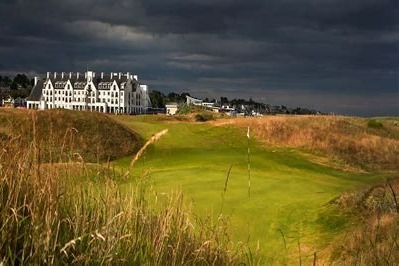


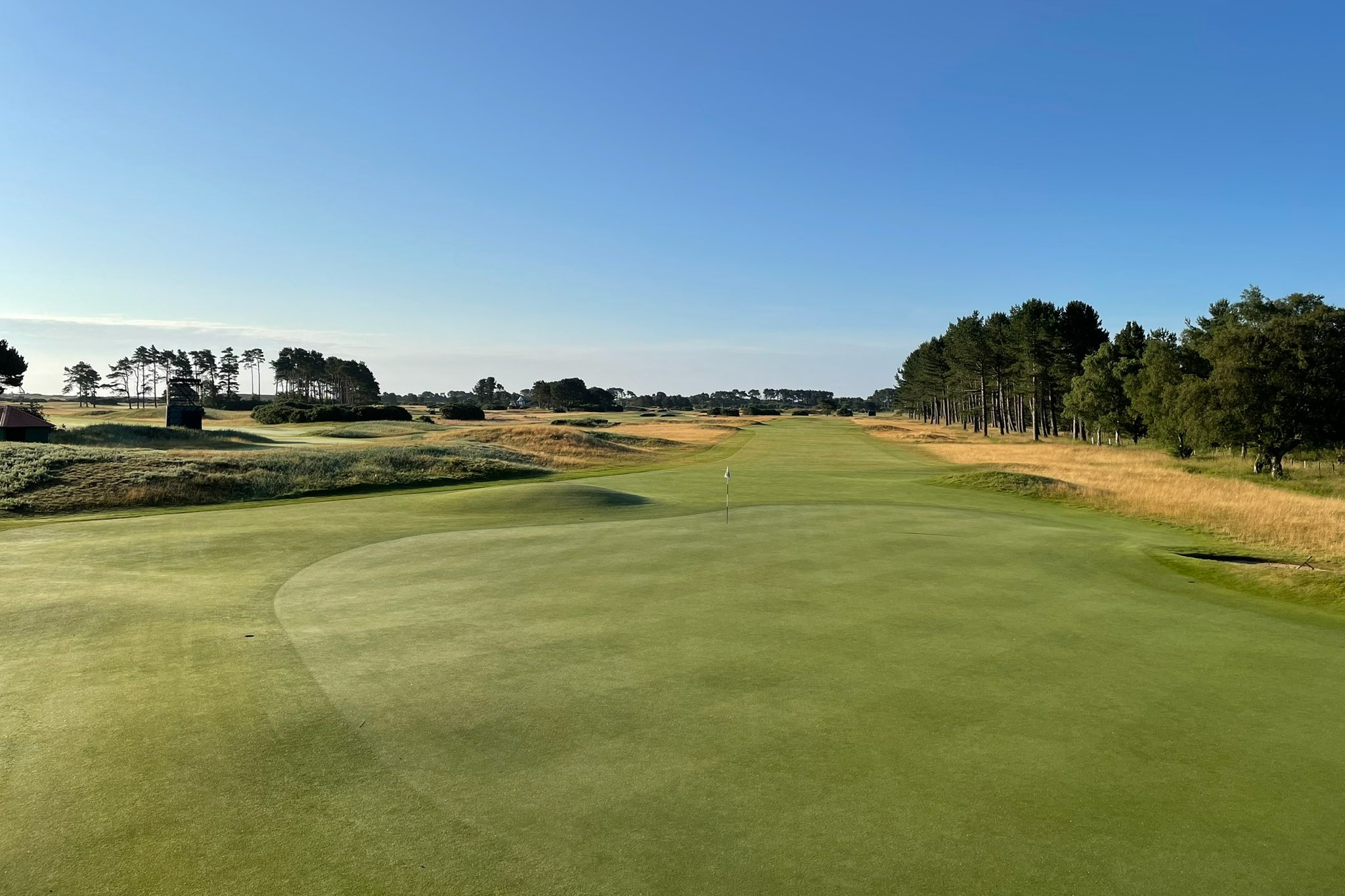
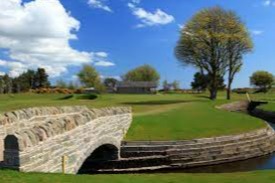
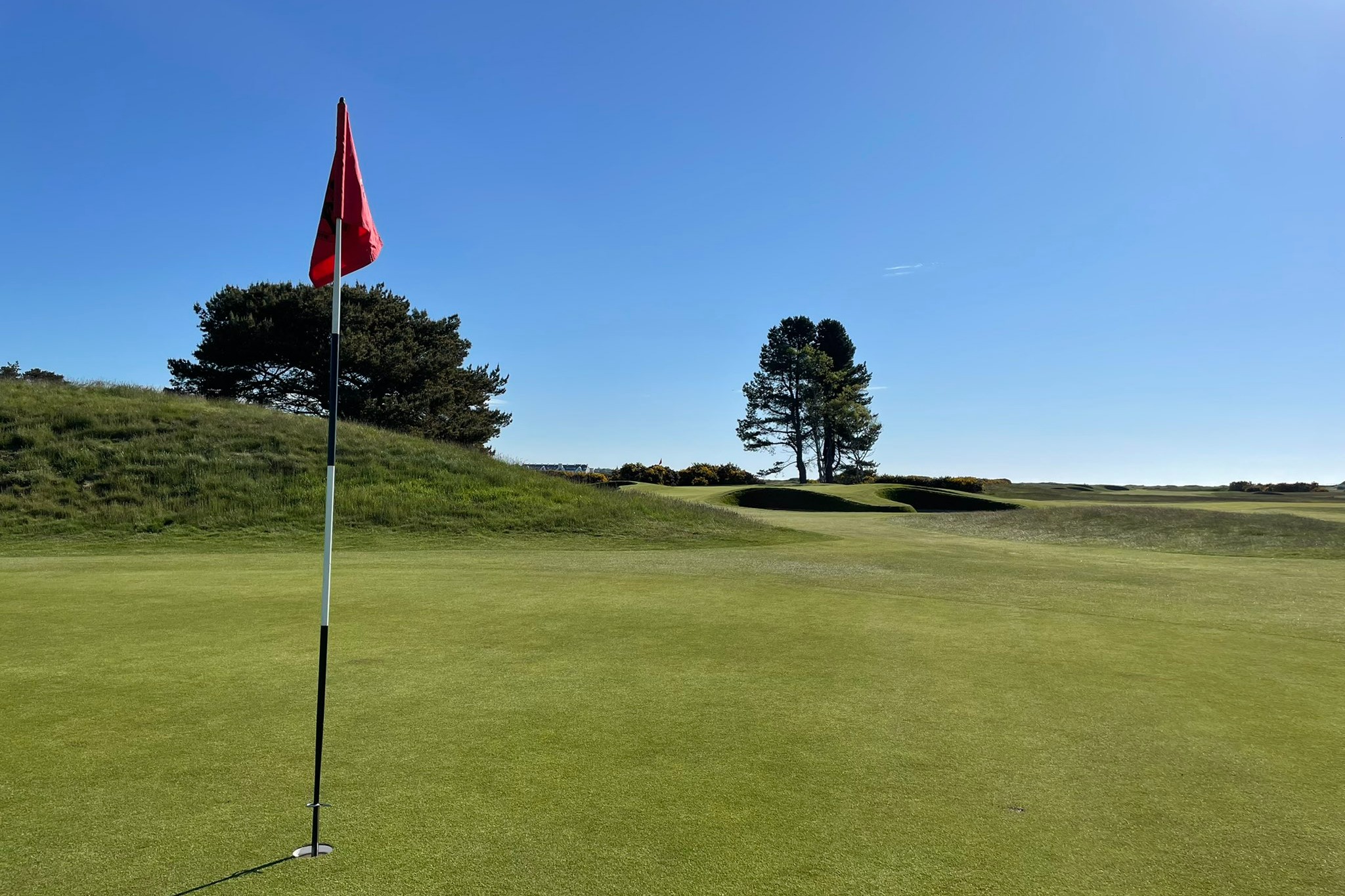

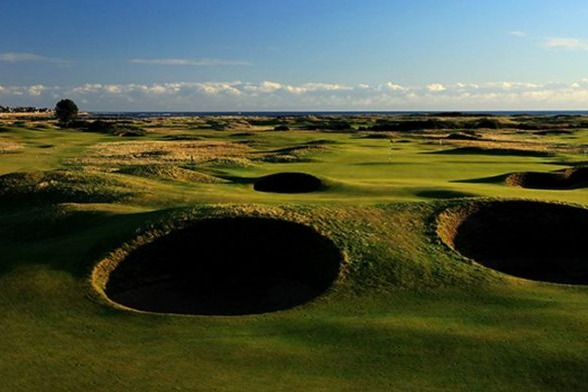

Championship
Championship
Championship Course
Hole 1 Cup - 410 yards Par 4 – Stroke Index 10
A reasonably gentle introduction to Carnoustie Championship golf course. The drive is played to a wide fairway with slopes which tend to take the ball to the right hand side, and should pose no real problems although the burn meandering in front of the 1st tee can intimidate the nervous golfer. The 2nd shot is one of the few blind shots to be played at Carnoustie and it is important to judge the distance correctly.
Hole 2 Gulley 435 yards Par 4 – Stroke Index 4
A long and straight drive is required to avoid the bunkers which will catch even the slightly mishit shot. Once the fairway has been found the 2nd shot is straightforward, but with a green measuring 60 yards from front to back the choice of the right club is crucial.
Hole 3 Jockie’s Burn 351 yards Par 4 – Stroke Index 14
A short but very deceptive par 4, this hole does not place too many pressures upon the drive although the fairway bunkers will catch anything pulled slightly left.
Hole 4 Hillocks 375 yards Par 4 – Stroke Index 16
The hole dog legs slightly to the right and players must be cautious not to hook the ball as a ditch awaits just over the back of the fairway bunker. The green, the only double green on the golf course, is well protected by bunkers and the approach should be long if anything.
Hole 5 Brae 392 Yards Par 4 – Stroke Index 12
A hole which dog legs to the right and which has a two tiered green. If the pin is placed on the top tier it can add as much as 4 clubs to the approach shot. Longer hitters must be careful not to run out of fairway as a narrow ditch stretches the entire width of the fairway at around 280 yards.
Hole 6 Hogan’s Alley 512 Yards Par 5 – Stroke Index 2
The 6th hole on the Championship Course was officially renamed on Wednesday 24th September 2003 as Hogan’s Alley by our 1999 Open champion Paul Lawrie. To commemorate Ben Hogan’s feat in 1953,
Named after the immortal Ben Hogan who won the Open Championship in 1953, this hole is where Carnoustie starts to turn up the heat.
Normally played into the prevailing wind this hole can be a severe par 5. Bunkers and out of bounds await the miss-cued drive and although the best line is up Hogan’s Alley between the bunkers and the out of bounds fence, it requires a brave player to drive to that narrow piece of fairway. The 2nd shot is no less perilous with a ditch angling across the fairway and the out of bounds continuing to be a threat.
The approach is reasonably straightforward to an undulating green, particular care must be taken if the pin is located on the back right portion of the green.
A player should always be content with a five on this hole as it can be the ruin of many a scorecard.
Hole 7 Plantation 394 Yards Par 4 – Stroke Index 8
Again the out of bounds threatens on the left hand side and the fairway bunkers are cleverly placed to catch the drive pushed only slightly to the right. Care must be taken not to over hit the 2nd shot and run through the green where a difficult up and down awaits.
Hole 8 Short 167 Yards Par 3 – Stroke Index 18
Carnoustie’s first par 3 and well worth the wait. On par with the great par 3’s in world golf with out of bounds left and bunkers surrounding an elevated green. Normally played into a cross wind it requires a good swing and no little courage to find the heart of this green.
Hole 9 Railway 413 Yards Par 4 – Stroke Index 6
The drive is paramount on this hole with out of bounds left, a ditch on the right and numerous fairway bunkers. Finding the fairway always comes as a welcome relief to any player but then a long difficult approach to a well-protected green awaits.
Hole 10 South America 446 Yards Par 4 – Stroke Index 3
The start of the back 9 and perhaps the most challenging 9 holes in golf await the player who stands on this tee. In order to reach the green in 2 a long and straight drive is required with particular care required to avoid 3 bunkers on the right hand side.
Once the player has found the fairway, a decision is then required as to whether the Barry Burn which runs some 40 yards in front of the green can be carried with a 2nd shot or not. Unless the player is confident of his ability to fly the ball all the way onto the putting surface, it is often best to lay up and accept a 5, which is never a bad score on this hole.
Hole 11 – John Philp 362 Yards Par 4 – Stroke Index 15
The decision must be made on the tee as to whether to take on the fairway bunkers with the driver and try to guide the ball through a narrow neck of fairway or to lay up and thereby leave a longer shot into the green. The green is well bunkered and slopes quite significantly from back to front which can make putting tricky.
Hole 12 Southward Ho 479 Yards Par 5 – Stroke Index 9
Played as a par 5 from the back tees and a par 4 from the other tees, this hole again challenges the player with an intimidating drive, whins and gorse must be carried and there are ditches on both the right and left hand sides. Two massive fairway bunkers on the right hand side eat into the heart of the fairway and will catch any shot that cuts slightly to the right. The approach must be played between 2 sets of bunkers positioned on the right and left hand side about 30 yards short of the green and it is often wise to lay up and rely upon a pitch and a putt.
Hole 13 Whins 161 Yards Par 3 – Stroke Index 17
A deceptively difficult short hole, particularly if it is played down wind when it becomes extremely difficult to stop the ball from running through the green. Bunkers surround the green and will catch anything which is not straight. Once in the bunker the high lips will test any players ability to get up and down.
Hole 14 Spectacles 476 Yards Par 5 – Stroke Index 1
Gary Player struck the finest shot of his life here in 1968 to make an eagle 3 which enabled him to go on to win the Open Championship. The drive is tough enough with out of bounds left and bunkers well in play. However the hole is made by the 2nd shot, where the player must decide whether he is going to carry the massive Spectacle bunkers or not. If a player goes for the green and lands in the Spectacles he can expect to be there for some time as these bunkers are huge and intimidating. Further bunkers closer to the green provide further protection and any player making 4 can feel justifiably proud of that score.
Hole 15 Lucky Slap 459 Yards Par 4 – Stroke Index 7
As hard a par 4 as can be found anywhere in golf, this hole requires a long and accurate drive and then a powerful approach to the very well protected green. Into the wind the majority of golfers will not be able to get home in 2 and if a lay up is required it must be kept well away from the bunkers some 25 yards short of the green as getting out of these in one stroke is extremely difficult.
Hole 16 Barry Burn 245 Yards Par 3 – Stroke Index 13
A 245-yard par 3 often played into the wind. Tom Watson had 5 attempts to get a par 3 here during the 1975 Open Championship and was not successful in doing so. In 1968 Jack Nicklaus was the only player to get past the pin in the final round. This hole is really a 3.5 and par is an outstanding achievement.
Hole 17 Island 433 Yards Par 4 – Stroke Index 5
Continuing with Carnoustie’s fearsome finish, the Barry Burn winds and twists it’s way down this hole. The drive must be placed between the island part of the hole and then the player is left with a long difficult approach to a green protected by whins and bunkers.
Hole 18 Home 444 Yards Par 4 – Stroke Index 11
No more difficult finishing hole will be found anywhere. The burn is in play for the drive to the right and left of the hole and also short. Fairway bunkers edge in to the right hand side and it was here that Johnny Miller lost the 1975 Championship when he took 2 to get out of the bunker. The Barry Burn crosses right in front of the green and it poses a huge obstacle for the 2nd shot. It was here that the hopes of Jean Van De Velde sunk in 1999 when Paul Lawrie went on to take the Open Title.